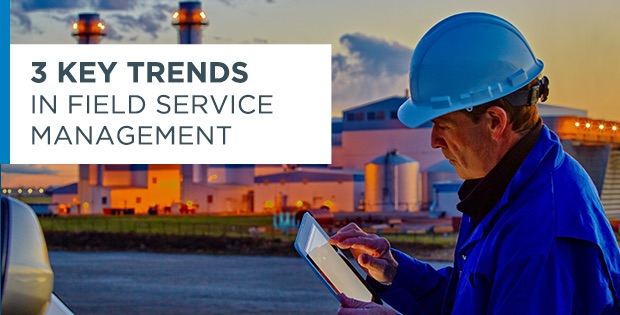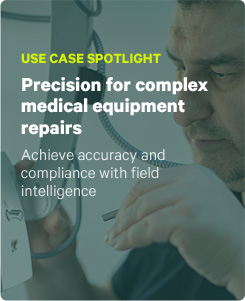
Throughout the field service management (FSM) space, there has been a significant change in process as technology has evolved. From standardizing processes across regions to suit a higher level of service for customers, to the agility to update processes as regulations change or incidents occur, trends are appearing which point to the future of FSM, and how technology is changing how things are done in the field – and how important data collected in the field is to feeding that change.
Process Standardization
Process standardization is a critical element to the digital transformation of any organization. It is of specific importance to those in the field service industry.
Uniting service departments across multiple geographies with the aim to create a common delivery method and best practices provides organizations with the opportunity to create a higher brand standard and consistent quality of service regardless of where and who is doing the work.
But uniformity is not enough. Forcing everyone to work the same way across the organization will not meet the needs of the business or their clients. Standardization needs to be contextual and dynamic to the environment and the real-world scenarios facing the tech or engineer. Standardization is only effective when it also allows for localized differences. Accommodating these levels of complexity and exceptions are a must to make for a more robust, sustainable and scalable process.
Many of our customers utilize third-party providers to service their clients, and this can create a disparity in the experience the customer receives. It also tends to reduce the timely visibility into important information coming from the field and increase uncertainty in predicting service requirements and customer needs. In creating a standard process that can be followed regardless of who’s delivering the service helps to ensure the customer receives the same level of care, while increasing compliance and predictability for the business.
As an example, a large international industrial manufacturer has leverage our platform to standardize their form templates to inspect assets, such as rooftop HVAC cooling units for large National retailers in the US. Through their standardization, our customer is able to gather key data on their customer’s equipment regardless of make and model which provides them with the insights they need to ensure more intelligent servicing and predictable maintenance schedule which results in less down-time and optimal efficiency for their customer. Using ProntoForms as a vehicle of standardization, enabled them to accelerate time to value, provided more timely insights into business-critical tasks and positioned them favourably for current and future business growth.
Asset-Centric Service
It used to be all about preventative maintenance now the industry is talking about becoming predictive. There are many powerful tools that will allow a service organization to develop predictive formulas and algorithms to determine issues and make decisions before they become critical, moving the company from reactive to proactive. However, before these powerful analytical engines can do their magic, they need to be fuelled with data. We hear from our clients how critical it is to have the ability to collect rich data from the field that is accurate, contextual and timely and then seamlessly share that data with the back office for analysis.
Process standardization and predictive models all orbit around the 2nd key trend which is an asset-centric mode of operation. There are many elements to becoming asset-centric, but the most compelling reason we see is to help make life easier for the technician or engineer. Creating context for the field worker, focuses their efforts on key tasks that are critical to the specific asset. This means they can spend less time on administrative tasks, ensuring they have the proper tools and parts to do their job the first time, and reduces the number of individual decisions they need to make to do what’s required in a timely, reliable and meaningful way.
Agility and Adaptability to Change
Navigating a maelstrom of risk and uncertainty, companies are learning to value adaptability and flexibility. Responsiveness has become fundamental to market resilience, giving business a new watchword in an ever-changing world – agility.
There are three critical components to agility: the operating environment, strategic responsiveness and organisational change. Our customers tell us the ease in which they can predict, identify, implement and manage their evolving business needs is their number one priority. We all know how compliance objectives are constantly changing, often feeling like a moving target. One cannot afford to get left behind as this can negatively impact the brand image and market value.
One of our customers, who is a large medical device manufacturer, has been able to empower their business group leaders with the ability to quickly and intuitively implement change using a process of change-test and repeat. In their previous system even, a simple change to their T&V Checklists could require months of IT resources to implement, and that critical change would often be late to market as a result. This delay created a higher level of risk to the business for potential non-compliancy. The switch to our platform has allowed them to become more agile and responsive to their evolving business needs and the complex and robust compliance standards required in the industry and has saved them 100s of IT man-hours previously required.
Conclusion
As technology changes, processes change to take advantage of the positive effects of innovation. This evolution can positively affect compliance, productivity, asset life, and every other facet of a business if a business has the foresight to invest in systems that support their technicians.
Want to learn more? Contact us for a demo and free trial.




